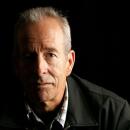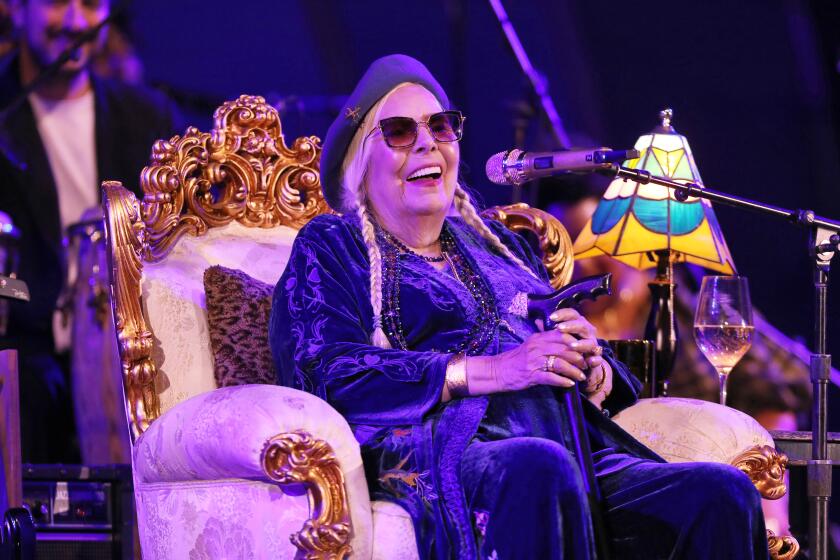The radical inclusiveness of Rhiannon Giddens
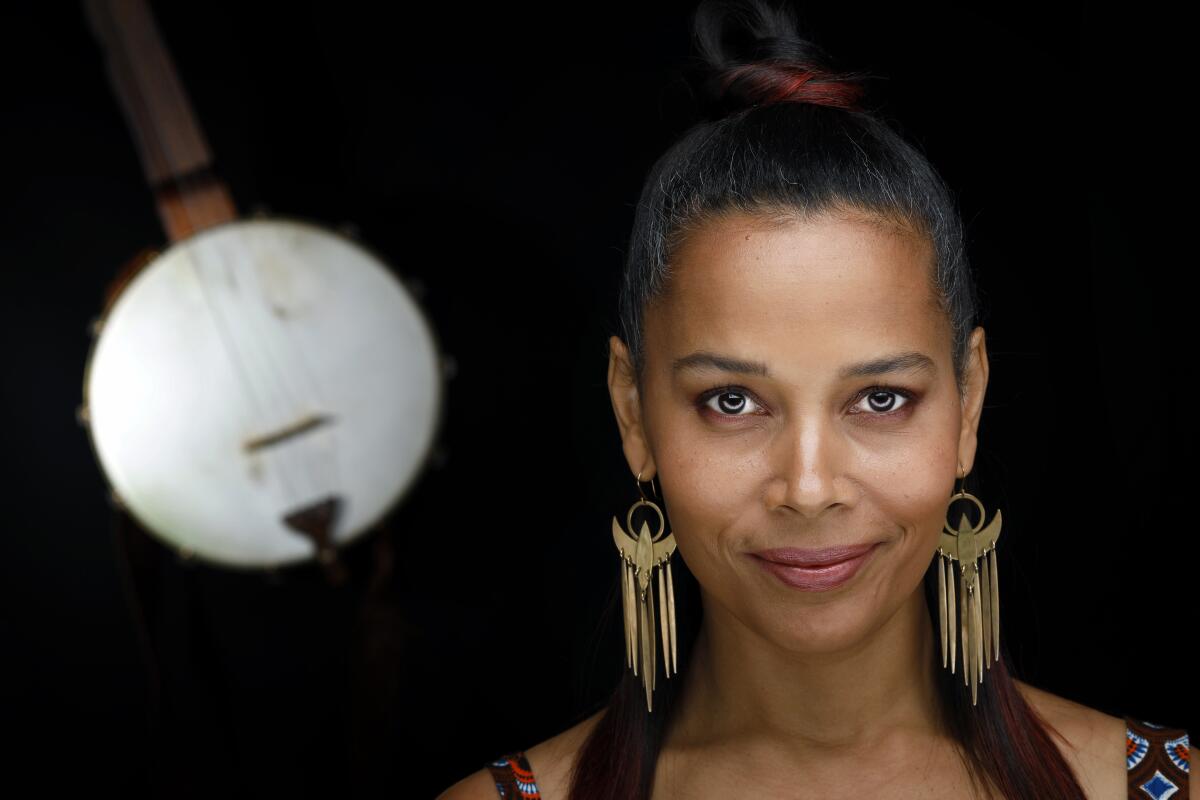
Like a good gospel preacher mid-sermon, Americana musician Rhiannon Giddens becomes more and more impassioned when she talks about her ongoing efforts â a crusade, one might even call it â to promote the musical contributions of populations that have been overlooked, or, as she puts it, âdisappeared.â
âThereâs so much push back, even against a simple tweet,â Giddens, 42, said with an even-keeled chuckle. âPeople who put Europe in the center of the universe, theyâre very fragile. Theyâll say, âYouâre so smug, youâre stripping everything away from the Europeans.â But Europe is merely part of a larger global culture. Anybody who thinks the lute just came out of a vacuum doesnât know the history.
For the record:
11:42 a.m. Oct. 9, 2019An earlier edition of this post identified the ballerina who danced the lead in the ballet âLucy Negro, Reduxâ as Carol Randall Williams. Kayla Rowser was the ballerina. Williams wrote the book for the ballet.
âIâm not trying to strip anybodyâs accomplishments from anyone,â she said. âIâm just asking, âCan we look at this a little more accurately?â â
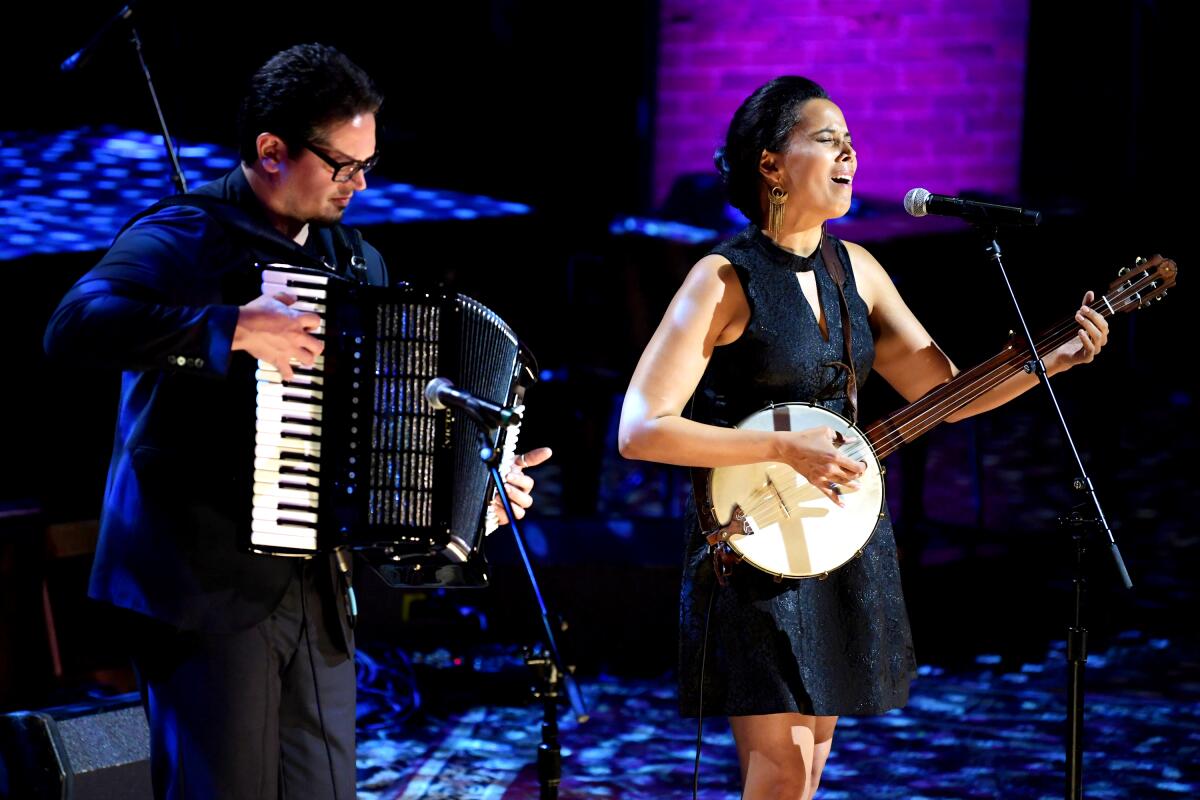
Her reference to the origins of the lute ties directly to her latest album, âThere Is No Other,â her collaboration with Italian jazz-trained multi-instrumentalist Francesco Turrisi, with whom sheâs on a U.S. tour that reaches Los Angeles for performances Oct. 19 and 20 at the Pico Union Project downtown. She and Turrisi will also do a Q&A on Oct. 21 at the Grammy Museum.
A couple romantically as well as professionally, Giddens and Turrisi have married their respective fascinations with the roots of their distant homelands on the new album. That project reunited her with American roots musician and producer Joe Henry, who shared a traditional folk album Grammy Award with her and the members of her former band, the Carolina Chocolate Drops, for their 2010 album, âGenuine Negro Jig.â
âMusicians always find these points of connection,â she said of the bracingly eclectic collection that travels from folk-gospel standard âWayfaring Strangerâ to Italian opera composer Gian Carlo Menottiâs aria âBlack Swanâ to early 20th century singer-songwriter-banjo player Ola Belle Reedâs âGonna Write Me a Letterâ to several of Giddensâ own compositions.

âWe all have the same urges: You sing this way, and I play that way. They really go to the same places.â
The diversity of the albumâs songs showcases both musiciansâ instrumental dexterity â she moves from her main instrument, the minstrel banjo, to violin and viola, while Turrisi hopscotches from accordion, cello, piano, oud and banjo to a variety of percussion instruments including frame drums and the tombak, a Persian hand drum.
The connective thread is Giddensâ commanding and exceptionally versatile and nuanced voice, which has made her one of the most lauded singers of the new millennium.
âIt was clear the first time I heard her at rehearsal,â superstar producer T Bone Burnett told The Times about his impetus for drafting her to sing at a multi-artist concert he had organized a few years ago. âRhiannon is next in a long line of singers that include Marian Anderson, Odetta, Mahalia Jackson, Rosetta Tharpe. She can take this strange music thatâs grown out of this convergence of cultures, and take it back around the world. We need that person in our culture.â

Thatâs precisely what she has continued to do to considerable acclaim on many fronts. The MacArthur Foundation awarded her one of its so-called genius grants in 2017, a $625,000 prize paid in five installments, something that she says hasnât so much transformed her world as allowed her to continue pursuing projects sheâd always envisioned âwithout having to stress about doing them.â
Those projects include the tour de force album released earlier this year, âSongs of Our Native Daughters,â highlighting songs based on writings of 19th century African American girls and women. Giddens collaborated with three other notable musicians, Amythyst Kiah, Leyla McCalla and Allison Russell, in adding music to century-old letters and poetry expressing the impact of slavery on those women.

The cushion of the MacArthur grant also gave her some financial security as she completed the music for âLucy Negro, Redux,â the first ballet score written specifically for an African American ballerina, Kayla Rowser, who danced the title role in the work that Nashville Ballet premiered in February. The New York Times called it âthe kind of miracle Nashville has never seen before.â
And the MacArthur grant also helps smooth the path as Giddens chips away at her first opera commission, a work slated to premiere next year at the prestigious Spoleto Festival of performing arts in Charleston, S.C.
âI keep starting supergroups, writing ballets and things like that,â she said. âI have to continue to work, and I have to be touring, because thatâs how I earn a living. My idea is to spread things out as much as I can. I like to pay people for what theyâre worth, and I also have to keep supporting my family while Iâm flying back and forth.â (Giddens has a daughter, Aoife, 10 and a son, Caoimhin, 6, from a previous marriage with Irish musician Michael Laffan.)
Her impassioned scholarship spans the rural mountain music of her native North Carolina to the Celtic music in which she immersed herself when she took up part-time residence in Ireland with Laffan, to the classical repertoire she studied while pursuing opera training at the Oberlin Conservatory in Ohio.
Her renown caught the attention of documentary filmmaker Ken Burns, who tapped her for a significant role in his latest series, âCountry Music,â now airing on PBS.
âWe love her to death,â Burns said in a separate interview. âIn her debut, sheâs talking off-camera about stuff that ratifies a lot of assumptions people have about country music. Then, we pull back and we see this African American woman with dyed hair, and it helps deconstruct whatever defenses you might have and helps enable people to hear this music.
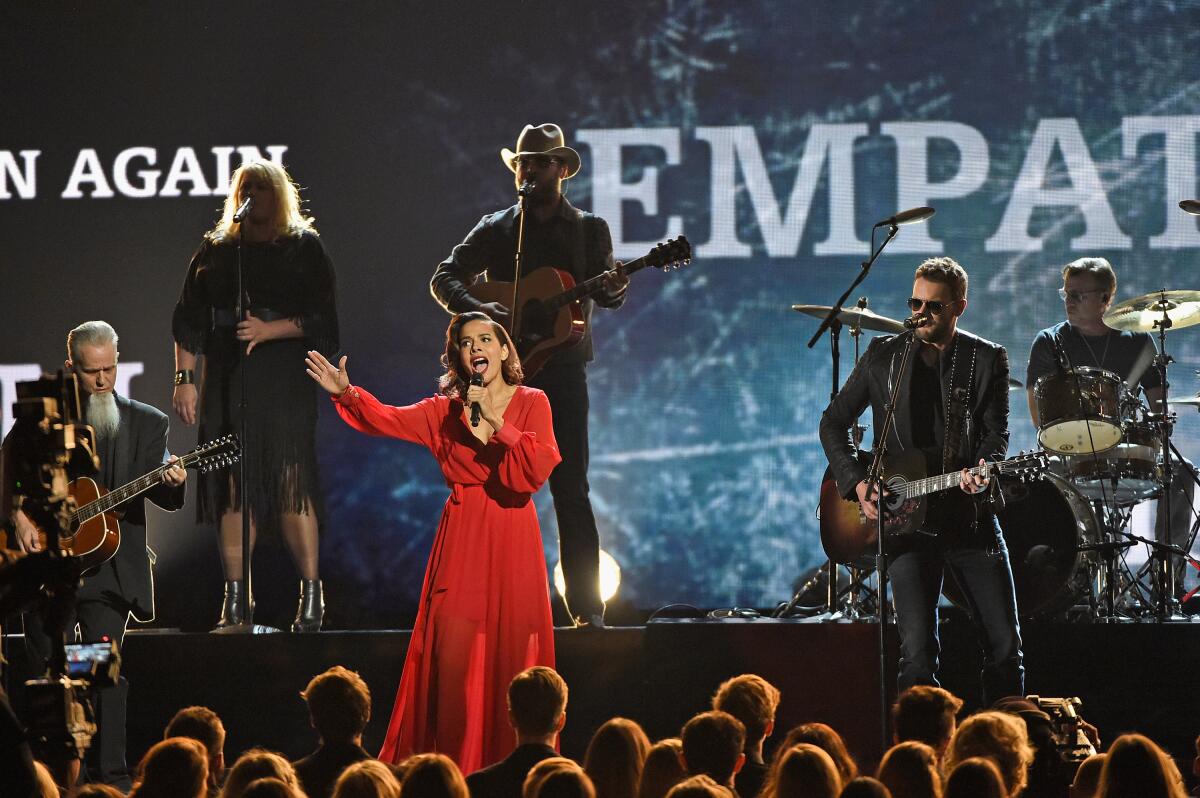
The singer, songwriter, multi-instrumentalist and music historian has spent much of her life happily transcending barriers separating different realms of music and culture, a proclivity that grew out of her upbringing as the daughter of an Anglo father and African American mother who married shortly after laws banning interracial marriage were struck down in the state.
U.S. history and issues of racism are deeply personal for Giddens and powerfully informed her journey with the Chocolate Drops, a group that researched and brought to the fore the central role African American musicians had in the emergence of string-band music in the U.S. in the 18th and 19th centuries. (Giddens is a banjo nerd who can happily talk all night about the instrumentâs origins in Africa.)

For her first post-Chocolate Drops solo album, âTomorrow Is My Turnâ in 2015, she saluted female musicians who had influenced her and shaped popular music socially, politically and/or aesthetically, including Odetta, Edith Piaf, Dolly Parton, Sister Rosetta Tharpe and Nina Simone.
In 2017, she turned to the music of the civil rights movement in âFreedom Highway,â tackling songs sheâd written, for the most part.
Finally, she and Turrisi enlisted Joe Henry to help them find a cohesive approach to the vastly disparate source material that captured their fancy.
âI heard it and kind of fell over,â Henry said. âI couldnât respond fast enough. I told her, âHowever you see this through, I encourage you not to lose your nerve.â â
Giddensâ simultaneous quest to move music forward while understanding and honoring the past is a big part of the reason she was recently chosen, along with pioneering 19th century musician Frank Johnson, also from North Carolina, as recipients of the Americana Music Assn.âs inaugural Legacy of Americana Award. The Legacy Award is part of a new partnership with the National Museum of African American Music, scheduled to open next year in Nashville.
The Americana Assn.âs partnership with the African American music museum, and the choice of Giddens and Johnson as the first Legacy award recipients, is seen in some corners as a step in the right direction to begin addressing another racial imbalance.
âThe Americana scene is getting better, but it has had its own problematic racial stuff,â said Charles L. Hughes Jr., director of the Lynne & Henry Turley Memphis Center at Rhodes College and author of âCountry Soul: Making Music and Making Race in the American South.â
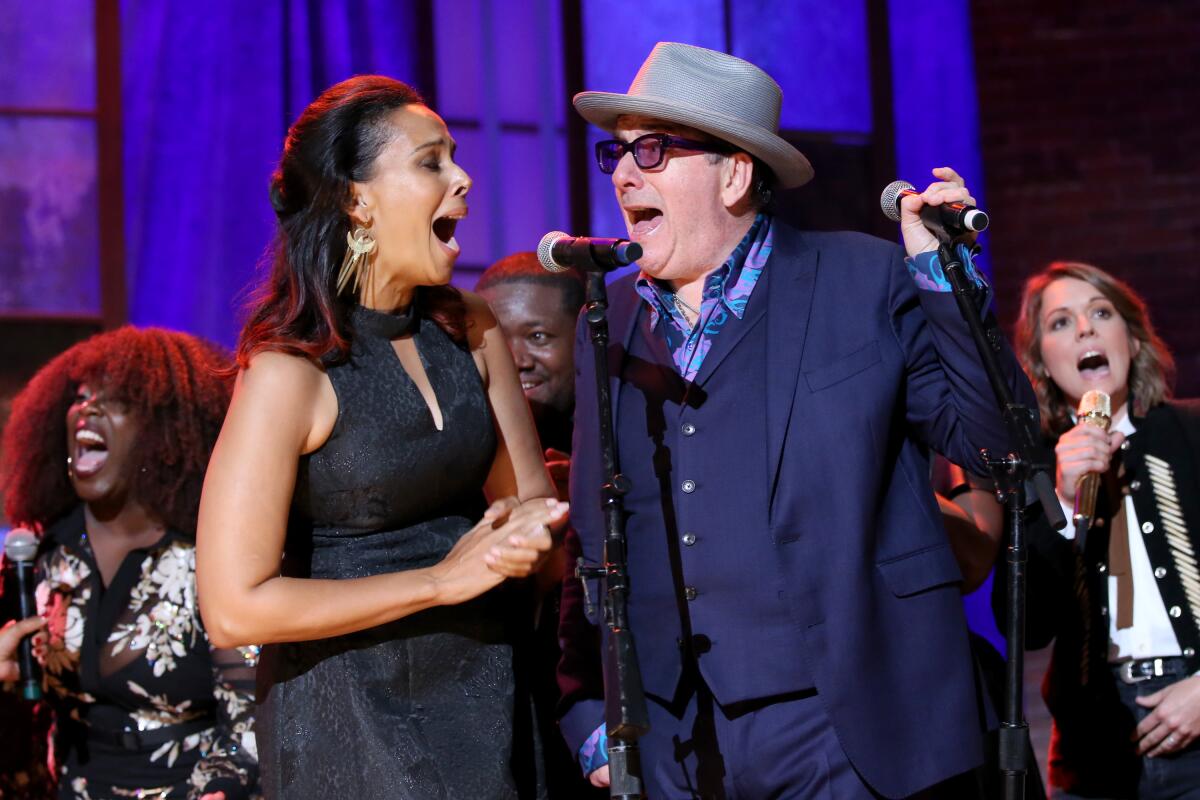
âFor a long time, Americana was basically a white space, with just a few black artists in a real rootsy scene often thought as being connected with the music of the past,â Hughes said. âRhiannon has really forced that issue in a powerful way.â
For her part, in discussing the Legacy Award, Giddens typically redirected the spotlight from herself to Johnson, whose wide-reaching popularity and influence have largely been eliminated from musical histories of the 1800s.
During her acceptance speech, Giddens cited a recent New Yorker profile about her that dug deeply into Johnsonâs history, quoting writer John Jeremiah Sullivan: âBy any calculus, [Johnson] was one of the first black celebrities in the South ... Johnson went from being hard to find to being impossible to escape. Researching him was like writing a history of baseball and ârediscoveringâ a hitter named Babe Ruth.â
During our interview, she also spoke of African American musicians highlighted in the Burnsâ âCountry Musicâ series, such as Lesley Riddle, who helped Carter Family patriarch A.P. Carter take down songs preserved through generations by oral tradition and bring them to wider audiences.
âSo many of them are not just slighted but erased,â she said. âItâs all about whatâs being sold, why itâs being sold and who itâs being sold to. Whether itâs money, nationalism, power or whatever, thereâs always a reason why a narrative gets foisted upon something that didnât happen before.â
As that relates to country music, debates over who receives credit creatively â and who profits financially â folds back on her comment about simply wanting to frame the question more honestly.
âIâm still trying to form it so it all makes sense,â she said. âWhy is this music so popular? Because it is a music of working-class people coming from different backgrounds and coming into all these amazing things. Who is benefiting from it and who is commodifying it? Thatâs where it gets into problems. But the music itself is always innocent.â
More to Read
Updates
3:00 p.m. Oct. 9, 2019: This post has been updated with information on Giddensâ appearance Oct. 21 at the Grammy Museum.
The biggest entertainment stories
Get our big stories about Hollywood, film, television, music, arts, culture and more right in your inbox as soon as they publish.
You may occasionally receive promotional content from the Los Angeles Times.



